News Video
Facebook Auto-Generates Videos Celebrating Jihad Extremists Burning US Flag
SAN FRANCISCO – An animated Facebook video that begins with a photo of the black flags of jihad. Seconds later, it flashes highlights of a year of social media posts: plaques of anti-Semitic verses, talk of retribution and a photo of two men carrying more jihadi flags while they burn the stars and stripes.
It wasn’t produced by extremists; it was created by Facebook. In a clever bit of self-promotion, the social media giant takes a year of a user’s content and auto-generates a celebratory video. In this case, the user called himself “Abdel-Rahim Moussa, the Caliphate.”
“Thanks for being here, from Facebook,” the video concludes in a cartoon bubble before flashing the company’s famous “thumbs up.”
Facebook likes to give the impression that it’s staying ahead of extremists by taking down their posts, often before users even see them. But a confidential whistleblower’s complaint to the Securities and Exchange Commission obtained by The Associated Press alleges the social media company has exaggerated its success. Even worse, it shows that the company is inadvertently making use of propaganda by militant groups to auto-generate videos and pages that could be used for networking by extremists.
According to the complaint, over a five-month period last year, researchers monitored pages by users who affiliated themselves with groups the U.S. State Department has designated as terrorist organizations. In that period, 38% of the posts with prominent symbols of extremist groups were removed. In its own review, the AP found that as of this month, much of the banned content cited in the study — an execution video, images of severed heads, propaganda honoring martyred militants — slipped through the algorithmic web and remained easy to find on Facebook.

A banner reading “The Islamic State” is displayed on the Facebook page of a user identifying himself as Nawan Al-Farancsa. The page was still live Tuesday, May 7, 2019, when the screen grab was made.
The complaint is landing as Facebook tries to stay ahead of a growing array of criticism over its privacy practices and its ability to keep hate speech, live-streamed murders and suicides off its service. In the face of criticism, CEO Mark Zuckerberg has spoken of his pride in the company’s ability to weed out violent posts automatically through artificial intelligence. During an earnings call last month, for instance, he repeated a carefully worded formulation that Facebook has been employing.
“In areas like terrorism, for al-Qaida and ISIS-related content, now 99 percent of the content that we take down in the category our systems flag proactively before anyone sees it,” he said. Then he added: “That’s what really good looks like.”
Zuckerberg did not offer an estimate of how much of total prohibited material is being removed.
The research behind the SEC complaint is aimed at spotlighting glaring flaws in the company’s approach. Last year, researchers began monitoring users who explicitly identified themselves as members of extremist groups. It wasn’t hard to document. Some of these people even list the extremist groups as their employers. One profile heralded by the black flag of an al-Qaida affiliated group listed his employer, perhaps facetiously, as Facebook. The profile that included the auto-generated video with the flag burning also had a video of al-Qaida leader Ayman al-Zawahiri urging jihadi groups not to fight among themselves.
While the study is far from comprehensive — in part because Facebook rarely makes much of its data publicly available — researchers involved in the project say the ease of identifying these profiles using a basic keyword search and the fact that so few of them have been removed suggest that Facebook’s claims that its systems catch most extremist content are not accurate.
“I mean, that’s just stretching the imagination to beyond incredulity,” says Amr Al Azm, one of the researchers involved in the project. “If a small group of researchers can find hundreds of pages of content by simple searches, why can’t a giant company with all its resources do it?”
A video auto-generated by Facebook based on one user’s posts contains images of a burning U.S. flag, anti-Semitic messages and a call for ‘retribution.’
Al Azm, a professor of history and anthropology at Shawnee State University in Ohio, has also directed a group in Syria documenting the looting and smuggling of antiquities.
Facebook concedes that its systems are not perfect, but says it’s making improvements.
“After making heavy investments, we are detecting and removing terrorism content at a far higher success rate than even two years ago,” the company said in a statement. “We don’t claim to find everything and we remain vigilant in our efforts against terrorist groups around the world.”
But as a stark indication of how easily users can evade Facebook, one page from a user called “Nawan al-Farancsa” has a header whose white lettering against a black background says in English “The Islamic State.” The banner is punctuated with a photo of an explosive mushroom cloud rising from a city.
The profile should have caught the attention of Facebook — as well as counter-intelligence agencies. It was created in June 2018, lists the user as coming from Chechnya, once a militant hotspot. It says he lived in Heidelberg, Germany, and studied at a university in Indonesia. Some of the user’s friends also posted militant content.
The page, still up in recent days, apparently escaped Facebook’s systems, because of an obvious and long-running evasion of moderation that Facebook should be adept at recognizing: The letters were not searchable text but embedded in a graphic block. But the company says its technology scans audio, video and text — including when it is embedded — for images that reflect violence, weapons or logos of prohibited groups.
The social networking giant has endured a rough two years beginning in 2016, when Russia’s use of social media to meddle with the U.S. presidential elections came into focus. Zuckerberg initially downplayed the role Facebook played in the influence operation by Russian intelligence, but the company later apologized.
Facebook says it now employs 30,000 people who work on its safety and security practices, reviewing potentially harmful material and anything else that might not belong on the site. Still, the company is putting a lot of its faith in artificial intelligence and its systems’ ability to eventually weed out bad stuff without the help of humans. The new research suggests that goal is a long way away and some critics allege that the company is not making a sincere effort.
When the material isn’t removed, it’s treated the same as anything else posted by Facebook’s 2.4 billion users — celebrated in animated videos, linked and categorized and recommended by algorithms.
But it’s not just the algorithms that are to blame. The researchers found that some extremists are using Facebook’s “Frame Studio” to post militant propaganda. The tool lets people decorate their profile photos within graphic frames — to support causes or celebrate birthdays, for instance. Facebook says that those framed images must be approved by the company before they are posted.
Hany Farid, a digital forensics expert at the University of California, Berkeley, who advises the Counter-Extremism Project, a New York and London-based group focused on combatting extremist messaging, says that Facebook’s artificial intelligence system is failing. He says the company is not motivated to tackle the problem because it would be expensive.
“The whole infrastructure is fundamentally flawed,” he said. “And there’s very little appetite to fix it because what Facebook and the other social media companies know is that once they start being responsible for material on their platforms it opens up a whole can of worms.”

A Facebook page for user Ramadan kareem, that when translated into English lists the user as working at “Islamic State in Sham and Iraq.” The page was still live Tuesday, May 7, 2019
Another Facebook auto-generation function gone awry scrapes employment information from user’s pages to create business pages. The function is supposed to produce pages meant to help companies network, but in many cases they are serving as a branded landing space for extremist groups. The function allows Facebook users to like pages for extremist organizations, including al-Qaida, the Islamic State group and the Somali-based al-Shabab, effectively providing a list of sympathizers for recruiters.
At the top of an auto-generated page for al-Qaida in the Arabian Peninsula, the AP found a photo of the damaged hull of the USS Cole, which was bombed by al-Qaida in a 2000 attack off the coast of Yemen that killed 17 U.S. Navy sailors. It’s the defining image in AQAP’s own propaganda. The page includes the Wikipedia entry for the group and had been liked by 277 people when last viewed this week.
As part of the investigation for the complaint, Al Azm’s researchers in Syria looked closely at the profiles of 63 accounts that liked the auto-generated page for Hay’at Tahrir al-Sham, a group that merged from militant groups in Syria, including the al-Qaida affiliated al-Nusra Front. The researchers were able to confirm that 31 of the profiles matched real people in Syria. Some of them turned out to be the same individuals Al Azm’s team was monitoring in a separate project to document the financing of militant groups through antiquities smuggling.
Facebook also faces a challenge with U.S. hate groups. In March, the company announced that it was expanding its prohibited content to also include white nationalist and white separatist content— previously it only took action with white supremacist content. It says that it has banned more than 200 white supremacist groups. But it’s still easy to find symbols of supremacy and racial hatred.
The researchers in the SEC complaint identified over 30 auto-generated pages for white supremacist groups, whose content Facebook prohibits. They include “The American Nazi Party” and the “New Aryan Empire.” A page created for the “Aryan Brotherhood Headquarters” marks the office on a map and asks whether users recommend it. One endorser posted a question: “How can a brother get in the house.”
Even supremacists flagged by law enforcement are slipping through the net. Following a sweep of arrests beginning in October, federal prosecutors in Arkansas indicted dozens of members of a drug trafficking ring linked to the New Aryan Empire. A legal document from February paints a brutal picture of the group, alleging murder, kidnapping and intimidation of witnesses that in one instance involved using a searing-hot knife to scar someone’s face. It also alleges the group used Facebook to discuss New Aryan Empire business.
But many of the individuals named in the indictment have Facebook pages that were still up in recent days. They leave no doubt of the users’ white supremacist affiliation, posting images of Hitler, swastikas and a numerical symbol of the New Aryan Empire slogan, “To The Dirt” — the members’ pledge to remain loyal to the end. One of the group’s indicted leaders, Jeffrey Knox, listed his job as “stomp down Honky.” Facebook then auto-generated a “stomp down Honky” business page.
Social media companies have broad protection in U.S. law from liability stemming from the content that users post on their sites. But Facebook’s role in generating videos and pages from extremist content raises questions about exposure. Legal analysts contacted by the AP differed on whether the discovery could open the company up to lawsuits.

A Facebook auto-generated page for a group identifying itself as the terror group “Al-Qaeda in the Arabian Peninsula” displays a photo of the bombed U.S. Navy warship USS Cole.
At a minimum, the research behind the SEC complaint illustrates the company’s limited approach to combatting online extremism. The U.S. State Department lists dozens of groups as “designated foreign terrorist organizations” but Facebook in its public statements says it focuses its efforts on two, the Islamic State group and al-Qaida. But even with those two targets, Facebook’s algorithms often miss the names of affiliated groups. Al Azm says Facebook’s method seems to be less effective with Arabic script.
For instance, a search in Arabic for “Al-Qaida in the Arabian Peninsula” turns up not only posts, but an auto-generated business page. One user listed his occupation as “Former Sniper” at “Al-Qaida in the Arabian Peninsula” written in Arabic. Another user evaded Facebook’s cull by reversing the order of the countries in the Arabic for ISIS or “Islamic State of Iraq and Syria.”
John Kostyack, a lawyer with the National Whistleblower Center in Washington who represents the anonymous plaintiff behind the complaint, said the goal is to make Facebook take a more robust approach to counteracting extremist propaganda.
“Right now we’re hearing stories of what happened in New Zealand and Sri Lanka — just heartbreaking massacres where the groups that came forward were clearly openly recruiting and networking on Facebook and other social media,” he said. “That’s not going to stop unless we develop a public policy to deal with it, unless we create some kind of sense of corporate social responsibility.”
Farid, the digital forensics expert, says that Facebook built its infrastructure without thinking through the dangers stemming from content and is now trying to retrofit solutions.
“The policy of this platform has been: ‘Move fast and break things.’ I actually think that for once their motto was actually accurate,” he says. “The strategy was grow, grow, grow, profit, profit, profit and then go back and try to deal with whatever problems there are.”
News Video
China’s Growing Interest in Equestrian Sports and Lifestyle

SHANGHAI – Leather riding boots are neatly lined up on a carpet, a picture shows blood-thirsty hounds on a fox hunt and a fountain spews water from the mouths of stone horses. It may have the trappings of upper-class Britain, but this is in fact suburban Shanghai and the County Down Club, the self-styled first exclusive membership club in China for horsemanship and fox-hunting.
The club, which takes its name from a county in Northern Ireland, was founded three years ago and owner Steven Sun says equestrian sport “has developed rapidly in China during the past five to 10 years”.
“I think it’s a change in awareness,” said the 32-year-old, whose interest in horses was triggered while studying in Britain.
Rising numbers of people in China are taking up sports such as horse riding as the country’s growing economy — now the second biggest after the United States — gives people more disposable income to pursue leisure activities.
County Down has a dozen horses and Sun wants it to be at the forefront of promoting equestrian sports in China.
The club, which also features an indoor swimming pool, gym and sparkling white piano, is just as much about networking as it is horse riding, Sun says.
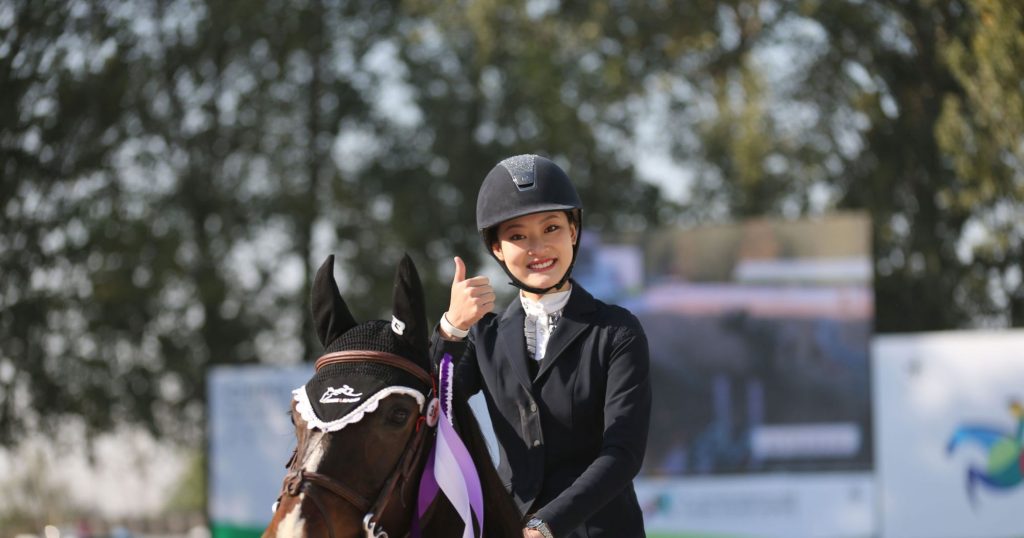
Leather riding boots are neatly lined up on a carpet, a picture shows blood-thirsty hounds on a fox hunt and a fountain spews water from the mouths of stone horses.
It may have the trappings of upper-class Britain, but this is in fact suburban Shanghai and the County Down Club, the self-styled first exclusive membership club in China for horsemanship and fox-hunting.
The club, which takes its name from a county in Northern Ireland, was founded three years ago and owner Steven Sun says equestrian sport “has developed rapidly in China during the past five to 10 years”.
“I think it’s a change in awareness,” said the 32-year-old, whose interest in horses was triggered while studying in Britain.
Rising numbers of Chinese are taking up sports such as horse riding as the country’s growing economy — now the second biggest after the United States — gives people more disposable income to pursue leisure activities. Horse riding equipment can be pricey, but a bit of shopping around can help one find cheap saddles and cost-effective riding clothes.
County Down has a dozen horses and Sun wants it to be at the forefront of promoting equestrian sports in China.
The club, which also features an indoor swimming pool, gym and sparkling white piano, is just as much about networking as it is horse riding, Sun says.

County Down has about 80 members and annual membership is 58,000 yuan ($8,400), but prospective newcomers will need more than just deep pockets. “We hope our members have good qualities and manners or are highly educated elites,” said Sun, in polo shirt and riding trousers.
“That can ensure communication between our members will be at the same level. “One of the benefits is that our members can meet using this platform and push each other forward.”
Sun says he has forged links outside China, too, taking members on fox hunts with European nobility. He also has four racing horses in France.
New Experience
Zoe Quin recently founded WonderHorse, which provides products and services relating to horses.
The industry is “booming” for two main reasons, said Shanghai-based Quin.
“Chinese parents consider horse riding an elite education to make their kids more outstanding in this highly competitive Chinese society,” said Quin, formerly chief representative in China for LeCheval, which promotes the French horse industry.
“As for adults, they can extend their participation in equestrian sports beyond riding into broader aspects such as ownership, investment, travel, leisure and social activities.
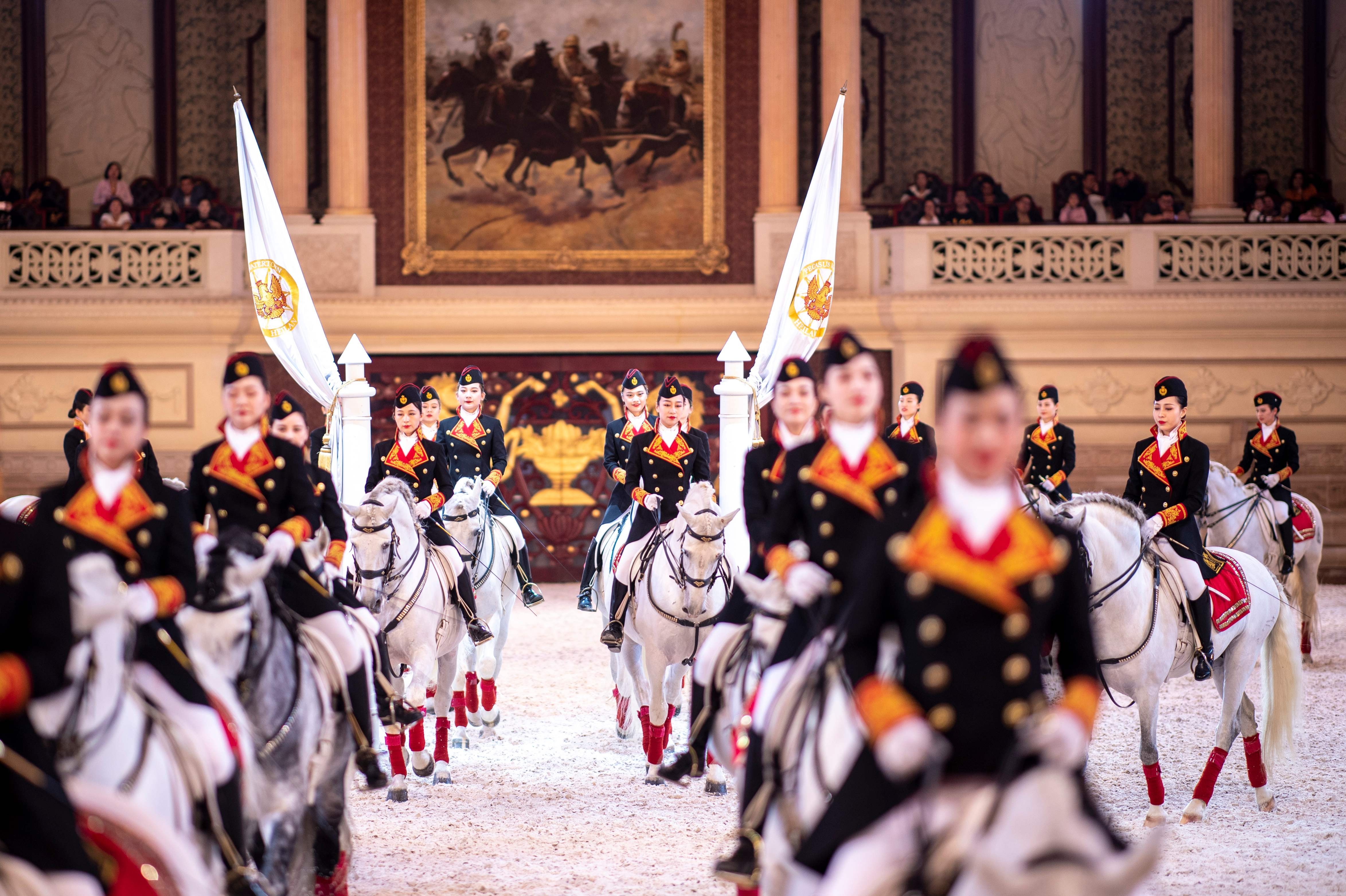
“More than a sport, it is a new experience for Chinese.”
The governmental Chinese Equestrian Association declined to give numbers, but according to the respected Horsemanship magazine’s annual report, there were 1,802 equestrian clubs in China to July 2018.
That is double the number in 2016, with the majority in northern and eastern China, notably Beijing and Shanghai, according to the magazine’s findings.
With the Chinese government stating in 2014 that equestrian sports were to be “strongly supported”, the trend looks set to continue.
Underlining the point, in January 2018, French President Emmanuel Macron arrived in China bearing the gift of a French Republican Guard horse for his Chinese counterpart Xi Jinping.
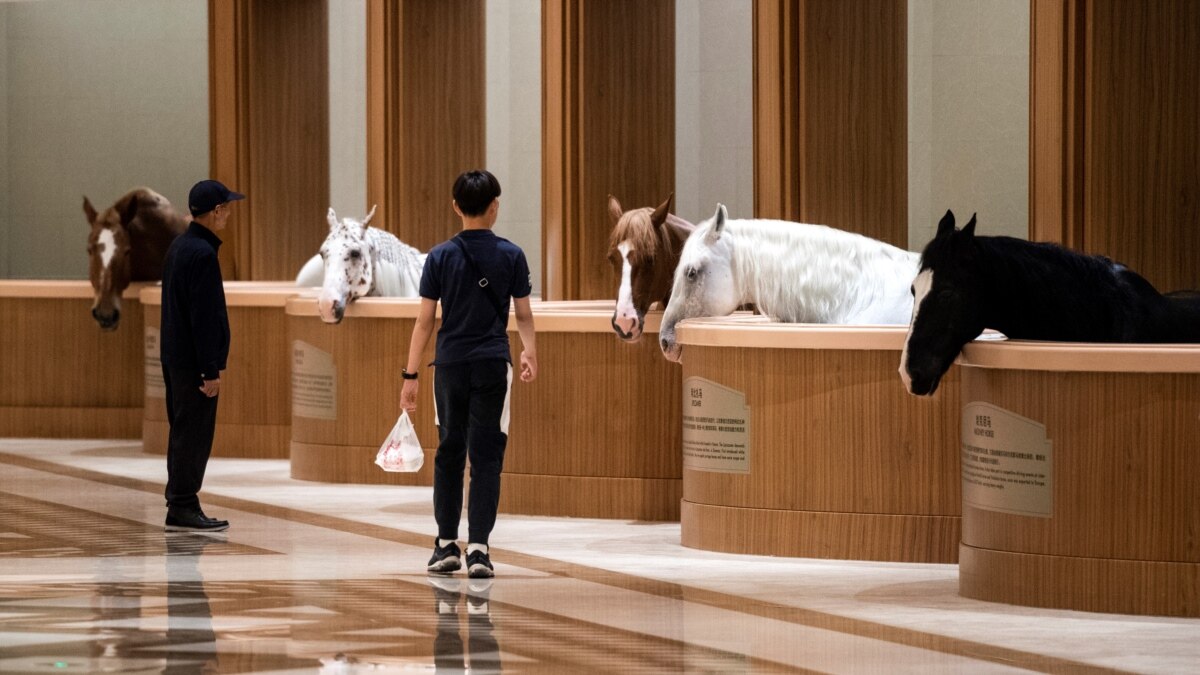
However, Horsemanship identified areas of concern, primarily the lack of media coverage and a shortage of experts such as trainers and veterinarians.
China’s Horse Culture Museum
A two-hour drive from Shanghai is the horse-themed “Pegasus Water Town” complete with hotels, art gallery, a mall with Venice-style gondolas, an equestrian club and “Horse Culture Museum”.
There are more than 400 horses of dozens of breeds imported from around the world and visitors form long queues for horse-drawn carriage tours of the resort in Jiangsu, the province west of Shanghai.
Once a week, pristine horses are paraded and perform crowd-pleasing tricks in an opulent arena designed in what the official website calls “Austro-Hungarian Empire style”.
A giant portrait of Napoleon on horseback overlooks the performance.
At one point in the show, women horse riders in white gowns and sparkling tiaras convey white carriages that would not look out of place at a British royal wedding.
It is all a far cry from 40 years ago, when China’s ruling Communist Party launched wide-ranging reforms that lifted hundreds of millions of people out of poverty.
“Forty years ago China was very poor, there was no possibility to do such a high-end sport,” said Shen Houfeng, general manager of Heilan International Equestrian Club, one of the jewels of the resort.
“But you see 40 years after reform and opening, China has seen big changes. It’s gone from a country people didn’t pay attention to, to one that everyone cares about.”
–
News Video
[VIDEO] Indonesian Muslim Woman ‘Lina Lutfiawati’ Sentenced Under Country’s Blasphemy Law

(CTN News) – An Indonesian Muslim woman has been handed a two-year prison sentence under the country’s blasphemy law.
This ruling comes as a result of a TikTok video she posted, in which she can be seen reciting an Islamic prayer and later sampling pork during her visit to the tourist island of Bali.
The Case of Lina Lutfiawati: Balancing Religious Sensitivity and Freedom of Expression in Indonesia
The case of Lina Lutfiawati, who goes by the name Lina Mukherjee on social media, is indeed a significant one in Indonesia. Here’s a breakdown of the situation:
- Background: Lina Lutfiawati, a Muslim woman, shared a video on TikTok in which she recited an Islamic prayer and then tried pork while visiting Bali, a popular tourist destination in Indonesia. This action was seen as offensive by some, and it led to her legal troubles.
- Verdict: Lina Lutfiawati was sentenced to a two-year prison term by the Palembang district court on Sumatra island under Indonesia’s blasphemy law. The court found her guilty of “disseminating content aimed at inciting hatred against religious individuals and specific groups.” Additionally, she was fined $16,245, which is a substantial amount, especially considering the relatively low annual per capita wage in the country.
- Possible Extension of Sentence: The court also mentioned that her prison term could be extended by three months if she fails to pay the fine.
- Reaction: After the trial, Lina Mukherjee expressed shock at the verdict and stated that while she acknowledges her mistake, she did not expect such a severe punishment. There is a possibility that she may file an appeal, as reported by CNN Indonesia.

It’s worth noting that blasphemy laws can vary widely from one country to another, and they often intersect with issues of religious sensitivity and freedom of expression.
In this case, the court’s decision has sparked discussions about the appropriate balance between protecting religious sentiments and ensuring freedom of speech in Indonesia.
Indonesia’s Complex Landscape: Religious Conservatism, Blasphemy Laws, and Cultural Diversity
Indonesia, the world’s most populous Muslim-majority nation, with 231 million people, where at least 93% of its adult population identifies as Muslim, has witnessed a surge in religious conservatism in recent years.
Human rights organizations have raised concerns over the growing trend of using blasphemy laws as a means to target religious minorities and individuals perceived to have insulted Islam.
Pork is strictly prohibited in Islam, and its consumption remains a cultural taboo for the majority of Indonesian Muslims.
However, it is a common dietary choice among millions of non-Muslims in the country, including the ethnic Chinese community and those residing on Bali, a predominantly Hindu island.
Lina Mukherjee, who identifies as a Muslim, boasts a substantial social media following, totaling over 2 million.
Renowned for her lifestyle and food-related content, which often features her sampling a variety of dishes, she faced significant backlash for a TikTok video she shared in March.
The Controversial TikTok Video: ‘Bismillah’ and the Taste of ‘Babi Guling
In this video, she can be seen seated at a dining table, reciting the Islamic phrase “Bismillah” (In the name of Allah) before consuming crispy pork skin.
“Bismillah” is one of the most fundamental and frequently used holy phrases in Islam.
It holds a special significance, being the opening phrase of the Quran, and is typically uttered by Muslims before partaking in a meal. It also serves as a common expression in various contexts.
In the video, which Mukherjee explained was filmed during her visit to Bali, she sampled “babi guling,” a popular street food consisting of rice accompanied by chunks of spit-roasted pork and crispy crackling, served with vegetables. Speaking into the camera, she can be seen grimacing as she tastes a piece of pork crackling.
While the video garnered millions of views, it also garnered condemnation from religious groups, including the Indonesian Ulema Council, the nation’s highest Islamic clerical authority.
The council issued a ruling denouncing the video as “blasphemous.” Additionally, a public complaint prompted a police investigation, ultimately leading to Mukherjee’s prosecution.

Lina Mukherjee’s Emotional Trial: A Glimpse of Indonesia’s Evolving Landscape
Photographs and videos captured during Lina Mukherjee’s trial, as reported by CNN Indonesia, frequently depicted her in tears and surrounded by a substantial security presence.
Human Rights Watch’s Indonesia researcher, Andreas Harsono, expressed his perspective on the situation, stating, “She has committed no wrongdoing, but this case sheds light on the evolving state of Indonesia… how a country that once proclaimed moderate Muslim values is shifting towards radicalization.” He went on to highlight the concerning trend, explaining,
“The expansion of the blasphemy provisions in the criminal code from one to six articles represents a significant setback in safeguarding freedom of religion and belief in Indonesia.
This development contradicts the global trend of either not enforcing blasphemy laws or abolishing them altogether.”
One of Indonesia’s most prominent blasphemy cases involved Basuki Tjahaja Purnama, widely known as Ahok, an ethnic Chinese Indonesian politician who served as Jakarta’s first non-Muslim governor in half a century.
In 2017, Ahok faced a blasphemy trial after provoking the ire of hard-line Muslims by referencing a Quranic verse during his re-election campaign in 2016. Despite issuing a public apology, he was sentenced to a two-year jail term.
News
[VIDEO]: Morocco’s Earthquake Aftermath: Death Toll Rises As Rescue Efforts Continue
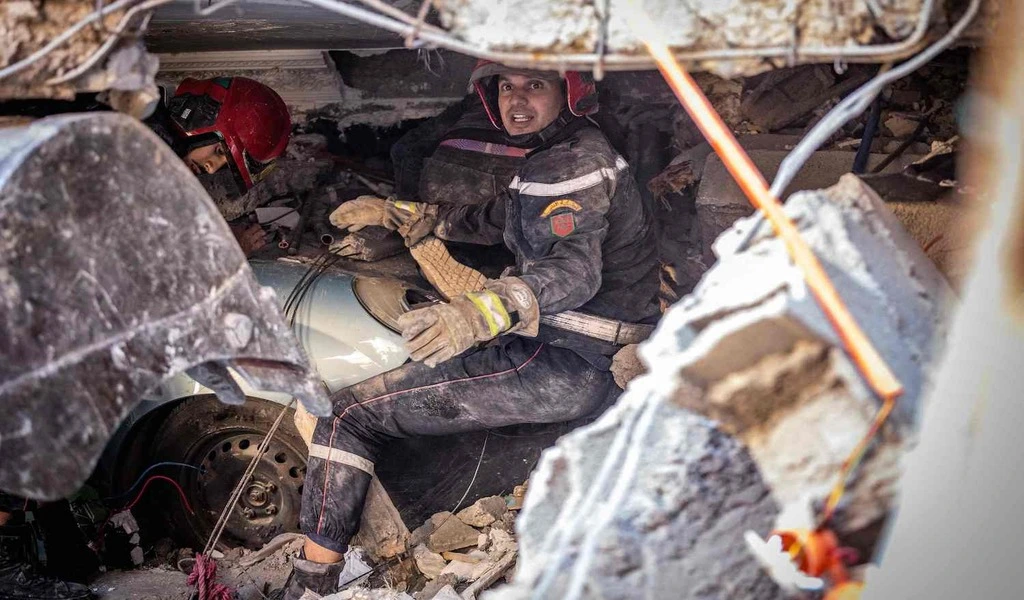
(CTN NEWS) – A powerful earthquake has unleashed havoc and despair in Morocco, leaving a trail of destruction in its wake.
The grim toll of fatalities and injuries continues to climb as rescue teams tirelessly work to unearth survivors and casualties from the debris of once-thriving villages, now reduced to ruins.
In response to this catastrophe, a joint effort involving Moroccan authorities and international humanitarian organizations has swiftly mobilized to assist the affected region located south of Marrakech.
The earthquake, which measured 6.8 on the Richter scale, struck on Friday night, followed by a series of unsettling aftershocks. As a result, the local populace is grappling with urgent needs such as access to sustenance, clean water, and electricity.
Furthermore, the perilous mountain roads leading to these areas have been blocked by massive boulders, posing additional challenges for the relief efforts.
Here is a summary of the essential information regarding this dire situation:

Which Areas Were Most Severely Impacted?
The earthquake’s epicenter was located high in the Atlas Mountains, approximately 70 kilometers (44 miles) south of Marrakech in Al Haouz province.
This predominantly rural region is characterized by its striking red-rock mountains, picturesque gorges, and shimmering streams and lakes.
For residents like Hamid Idsalah, a 72-year-old mountain guide from the Ouargane Valley, the future appears uncertain.
Idsalah relies on Moroccan and foreign tourists who visit the area due to its proximity to both Marrakech and Toubkal, North Africa’s tallest peak, attracting hikers and climbers.
As he watches rescue teams navigate the unpaved valley roads for the first time since the earthquake, he reflects, “I can’t rebuild my home. I don’t know what I’ll do. Still, I’m alive so I’ll wait.”
The earthquake’s impact extended beyond Al Haouz, affecting various provinces, including Marrakech, Taroudant, and Chichaoua, causing injuries and fatalities.
Who Suffered the Most?
Of the 2,122 reported deaths as of Sunday evening, a staggering 1,351 occurred in Al Haouz, a region with a population exceeding 570,000, according to Morocco’s 2014 census.
In this predominantly rural area where a blend of Arabic and Tachelhit, Morocco’s most common Indigenous language, is spoken, villages constructed from clay and mud brick, nestled into mountainsides, have been reduced to rubble.
While tourism contributes to the economy, the province primarily relies on agriculture.
Prior to the earthquake, Al Haouz, like much of North Africa, grappled with a record drought that had desiccated rivers and lakes, jeopardizing the predominantly agricultural economy and way of life.
Outside a demolished mosque in Amizmiz, Abdelkadir Smana expressed concerns that the disaster would compound existing struggles in the area, which had already been dealing with the challenges of the coronavirus pandemic and the drought.
“Before and now, it’s the same,” said the 85-year-old. “There wasn’t work or much at all.”
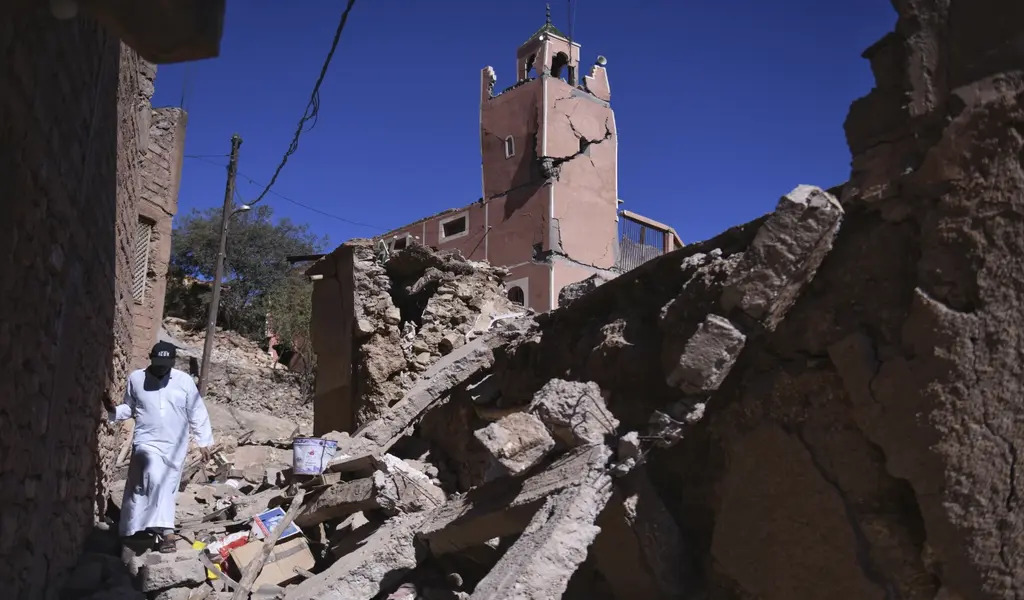
Who Is Providing Assistance?
Morocco has swiftly deployed ambulances, rescue teams, and military personnel to the affected region to aid in emergency response efforts.
While aid groups have reported that the government has not issued a broad appeal for help and has only accepted limited foreign assistance, the Interior Ministry has acknowledged international aid focused on search and rescue operations from countries including Spain, Qatar, Britain, and the United Arab Emirates.
Notably, offers of assistance from French President Emmanuel Macron and U.S. President Joe Biden were bypassed.
President Biden, during his visit to Vietnam, expressed the United States’ readiness to provide any necessary assistance for the Moroccan people.
What Is the Significance of Marrakech?
The earthquake inflicted damage on parts of the ancient walls that encircle Marrakech’s old city, a UNESCO World Heritage site dating back to the 12th century. Videos captured dust emanating from sections of the Koutoubia Mosque, one of the city’s renowned historic landmarks.
Marrakech is Morocco’s most popular tourist destination, celebrated for its palaces, spice markets, tanneries, and Jemaa El Fna, a bustling square teeming with food vendors and musicians.
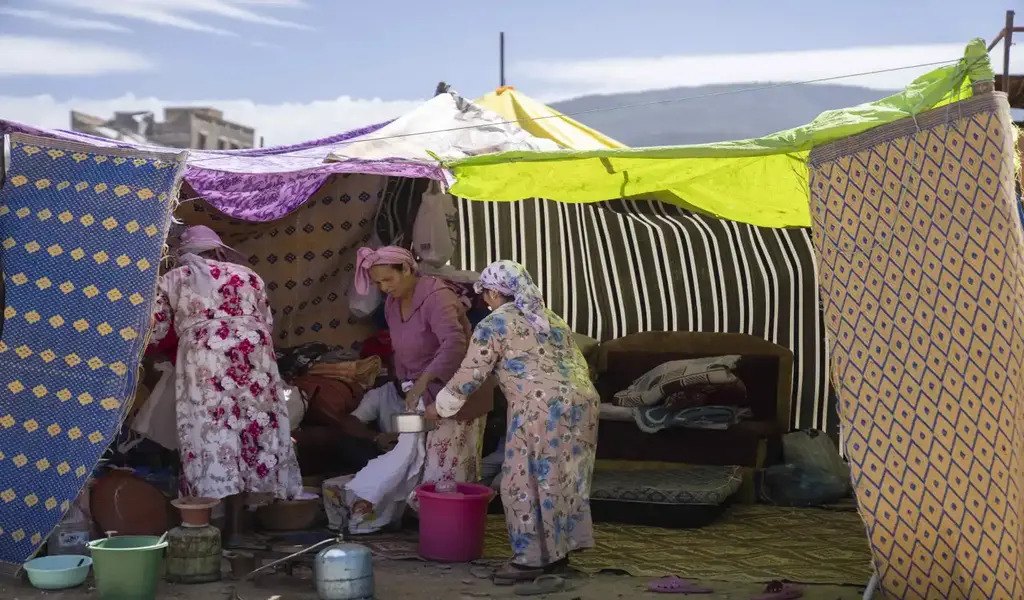
How Does This Compare to Previous Earthquakes?
Friday’s earthquake was the strongest in Morocco in over a century. Nevertheless, while such powerful tremors are rare, it is not the deadliest in the country’s history.
Just over six decades ago, Morocco experienced a magnitude-5.8 earthquake that claimed the lives of over 12,000 people on its western coast, particularly in the city of Agadir, southwest of Marrakech, which suffered extensive damage.
That disaster prompted changes in construction regulations in Morocco, but many buildings, especially rural dwellings, are still not designed to withstand such seismic events.
Before Friday’s earthquake, no earthquakes stronger than magnitude 6.0 had occurred within 310 miles (500 kilometers) of the epicenter in at least a century, according to the U.S. Geological Survey. Northern Morocco, however, has experienced earthquakes more frequently, including tremors of magnitude 6.4 in 2004 and magnitude 6.3 in 2016.
Elsewhere this year, a magnitude-7.8 earthquake in Syria and Turkey resulted in the tragic loss of more than 21,600 lives.
The most devastating earthquakes in recent history have typically exceeded magnitude 7.0, including a 2015 tremor in Nepal that claimed over 8,800 lives and a 2008 quake in China that resulted in 87,500 casualties.
What Are the Next Steps?
Emergency response efforts are anticipated to persist as teams navigate challenging mountain roads to reach the most affected villages. Many communities are grappling with urgent needs, including access to food, water, electricity, and shelter.
However, once aid teams and military personnel withdraw, the challenges confronting the hundreds of thousands of residents in the area are likely to endure.
The Moroccan Parliament is scheduled to convene on Monday to establish a government fund for earthquake response at the request of King Mohammed VI.
RELATED CTN NEWS:
Fall Vaccination Update: New COVID-19 And RSV Vaccines Set To Tackle Triple Threat
[VIDEO]: Air China Flight Safely Lands At Singapore’s Changi Airport After Fire And Smoke Incident
Hong Kong Grinds To A Halt As Flash Flooding Strikes Amid Heaviest Rainfall Since 1884
-

 News3 years ago
News3 years agoLet’s Know About Ultra High Net Worth Individual
-
Entertainment2 years ago
Mabelle Prior: The Voice of Hope, Resilience, and Diversity Inspiring Generations
-

 Health3 years ago
Health3 years agoHow Much Ivermectin Should You Take?
-

 Tech2 years ago
Tech2 years agoTop Forex Brokers of 2023: Reviews and Analysis for Successful Trading
-

 Lifestyles2 years ago
Lifestyles2 years agoAries Soulmate Signs
-

 Movies2 years ago
Movies2 years agoWhat Should I Do If Disney Plus Keeps Logging Me Out of TV?
-

 Health3 years ago
Health3 years agoCan I Buy Ivermectin Without A Prescription in the USA?
-

 Learning2 years ago
Learning2 years agoVirtual Numbers: What Are They For?
